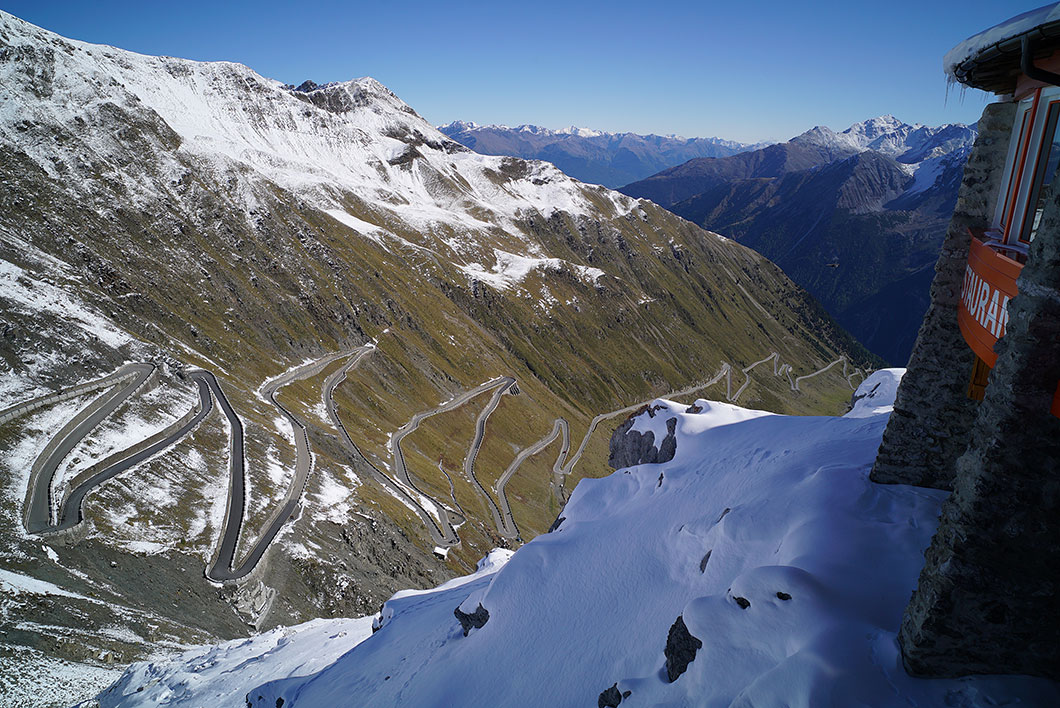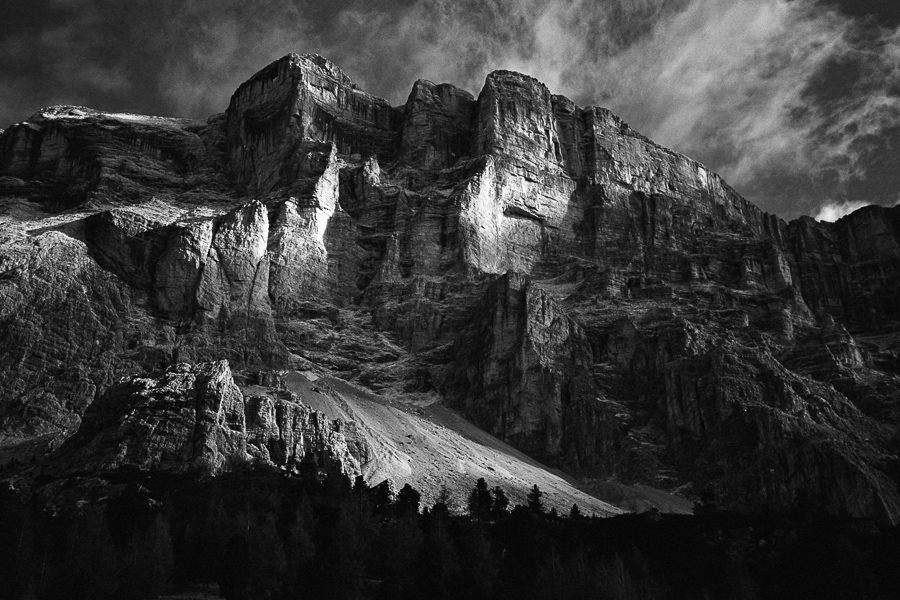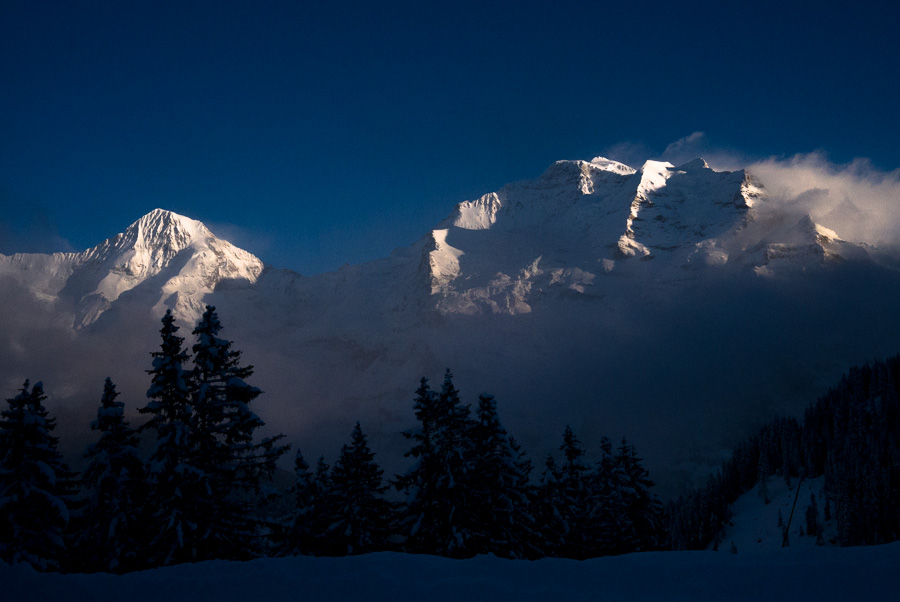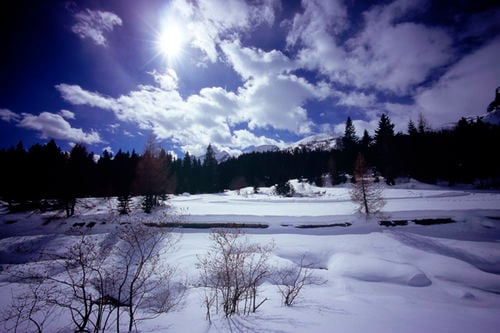raid
Dad Photographer
The Alps is a big place....yes a 90 definitely. France, Switzerland...Italy?
France, Switzerland, and Italy. 🙂
The Alps is a big place....yes a 90 definitely. France, Switzerland...Italy?
Raid,
When I used to photograph the Colorado mountains, I used 28mm, 50mm and a 135mm in my film days. Later on digital, In used a Sony R1 with a zoom lens with the equivalent 24-120mm. I found that more than adequate, and I often shoot at the wider end. So I'd suggest that you choose your prime lenses within that range.
I often shoot at around 12,000- 14,000 ft. above sea level. With digital, I often didn't use a polarizing filter, but at those elevations, the sky will naturally be rendered darker than shooting from sea level. So if I used a polarizing filter at all, I likely would not turn it to its maximum power. I had made the mistake when I used film in my younger days---the strong action of the polarizing filter that I used almost turned the sky black.
Panoramic shots are very suitable for that type of landscape. However, if you used a polarizing filter, you'd better re-adjust the strength of your polarizing filter after a shot or two. Otherwise you'd end up with very uneven skies on the horizontal plane. I'd say that you should use a tripod when you need to make those adjustments along the way.
Granted, most of the mountains in Switzerland are not as high. I remember the one that I visited (Mt. Titlis) was just a bit over 11,000 ft. But you still should have a strong UV filter for that.
Tin
Well Mont Blanc is 15,780' and the Alps have a much greater vertical relief from the valley than Colorado does.
Raid, if you visit the Italian side of Mont Blanc out of Courmayeur...a 90 will come in handy.
Sorry, I was just looking at my picture taken in Banff at the top. It was one of the examples where you need it wide. Today I just can't find it. Then I was in mountains last time I used 17-35 and 70-200 lenses on FF camera. I used all range.
This is what I was able to find today from the top shots.
https://photos.app.goo.gl/Q01w5LMEDxy6qkIJ2
It is 36 mm on FF.
This on is another top view taken with 17mm on FF
https://photos.app.goo.gl/A9VpcMMjXLposmNu1
Don't forget what you could always swipe panorama with mobile phone. Or use 50mm or even 35 in portrait orientation to take three overlapping shots and stitch them later on.
A uv/skylight filter at a minimum is advisable.
It’s a hassle to use a polarizer with rangefinders but they can be useful.
Zeiss T* coated lenses seem to have a polarizer effect at times. Take your modern zeiss glass if you can 🙂
When we toured the American Southwest a few years back, I took along a 21mm, 35mm, 50mm and 90mm. I probably used the 50mm the most, followed by the 35mm, then the 90mm. I used the 21mm the least, but I did use it to take some very dramatic photos.
Jim B.
I have never done stitched images, Peter. Your image came out looking very nice.Whichever lens you use Raid make sure you use a UV filter and perhaps a polarizing filter (e.g. if there is snow about). One thing I have found with mountains is lots of UV light due to the reduced filtering effect at altitude. You need to cut UV haze to get clear shots. It is said that digital sensors do not have the same susceptibility to UV haze as film. I am not sure but would not take the chance and I am sure that a polarizing filter will help with reflected light.
In terms of the question of which lens I think that when taking shots of "big" scenes their magnificence depends on their expansiveness. It is always disappointing I find to go somewhere where you are overwhelmed by the vast vistas only to make images that end up looking "small" and truncated. So a wide angle - perhaps 28mm would be my choice (with perhaps a small longer focus lens thrown in as back up in the event that a detailed shot of something is desired). I don't know that I would go ultra wide as distances tend to be large in mountains and everything recedes too much with ultra wide angle lenses, potentially leaving large areas of unfilled foreground and tiny mountains in the background.
One thing to consider is the possibility of taking some panoramas and stitching them afterwards. I sometimes use the Microsoft digital ICE software which is stitching software available free on the internet when making such images. https://www.microsoft.com/en-us/res...tography-applications/image-composite-editor/
Three or even four shots side by side will turn into a lovely panorama if the images are executed properly. The following, though not of mountains, was made in the Adelaide Hills using just such technique. Here I wanted to capture the rolling hills and tightly controlled order of the lines of vines. ICE works very well in this situation as there are few straight lines to become distorted by the software when manipulating the image to stitch together. This also somewhat solves the problem of how wide to go as wider shots can be created in post. In my case I also grouped that shot with a few less wide angle shots to get closer details as well. Hence my suggestion that you may wish to consider a longer lens too.
Vines and sky by Life in Shadows, on Flickr




Thank you!Peter ... Beautiful!






